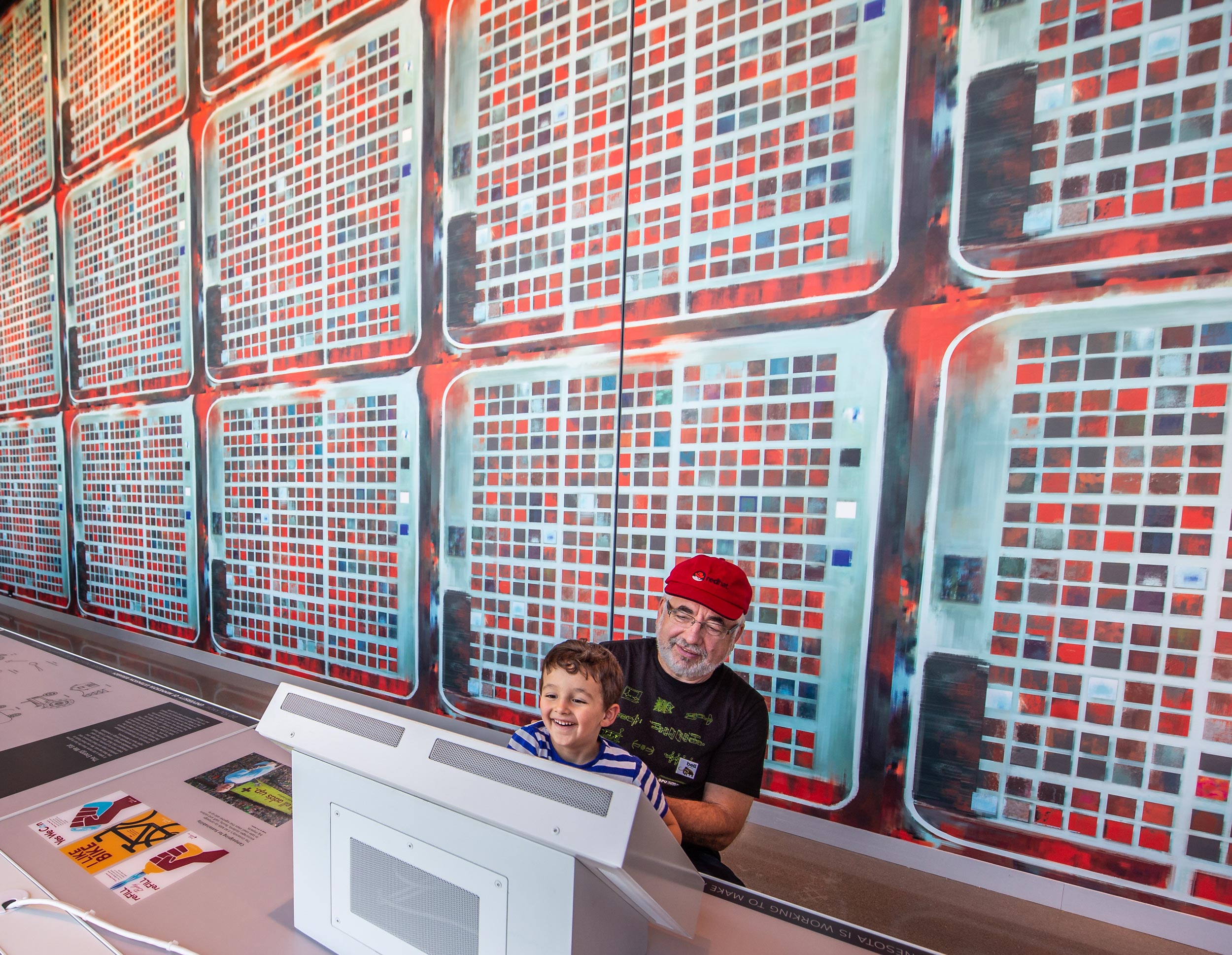
In a Bell Museum gallery space called Imagine the Future — in the main exhibit area, Minnesota Journeys — the walls are lined with red and blue and teal squares repeating on themselves: dozens of images collected via remote-sensing by the Center for Advanced Land Management and Information Technologies, at the School of Natural Resources, and archived at the Land Processes Distributed Active Archive Center in Sioux Falls, S.D.
“This wall display was possible because talented postdocs, CALMIT staff, and several dedicated government employees (at LPDAAC, at EROS Date Center in Sioux Falls) worked diligently to archive a sample of CALMIT data,” said John Gamon, a remote-sensing scientist with CALMIT, who first brought the “wallpaper” to SNR’s attention. “Jennifer Stampe (of the museum) later came across the data at the LPDAAC archive when she was seeking imagery to convey how the biodiversity research is done.”
The result visualizes research and plant diversity across a landscape for museum guests and invites them to ask deeper questions about our future. The exhibit has three main themes: Thriving with Diversity, Living within Limits, and Adapting to Change; the wallpaper is part of the first, illustrating research in agriculture and ecosystems in an innovative way.
“Part of what’s great about these false-color images as images is their similarity to modernist painting – the image is bold and interesting, non-narrative and non-representative,” said Stampe, associate director of Public Engagement and Science Learning at Bell Museum. “It's not obvious what this image is, and visitors guess many things: a computer chip, a board game, a box fan. It’s great that the image is open to interpretation, and that viewers see it and start asking questions – that kind of inquiry and engagement is exactly what we aim to inspire at the Bell.”
Gamon said the display conveys simply how biodiversity research can be done in an innovative way and why it’s essential to human wellbeing.
“The view from above always give us a dramatically different perspective, like that of Yertle the Turtle (before he fell to Earth),” he said. “In this case, Jennifer Stampe turned something we analyzed quantitatively into an abstract, repeating pattern.”
Gamon said the experience demonstrates the value of archiving data for others to use — sometimes in unexpected ways. Without having partnered on research led by the University of Minnesota, without having partnered to archive them, these images might not have existed, nor would they have ended up on the walls of world-renowned natural history museum.
“This display reminds me that CALMIT's collaborative airborne research has significant impact, not just in Nebraska and not only on important science questions, but also on the broader world,” he said. “The hard work of dedicated CALMIT staff and the committed UNL investment in airborne research represents an important contribution to the public's appreciation and understanding of science.”
To see the display, visit the museum at 88 Larpenteur Avenue West, St. Paul, MN 55113, open 10 a.m. to 5 p.m. Tuesdays to Sundays. Tickets are $12 for adults and $9 for children 3 to 21. Those under age 2 are free.
Learn more information on the museum.
Shawna Richter-Ryerson, Natural Resources